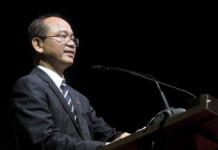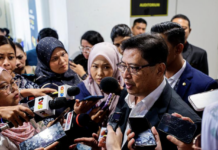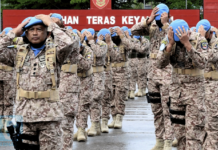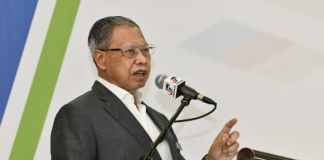KUALA LUMPUR, Feb 10 — The Bumiputera Agenda Steering Unit (TERAJU), which was set up more than 10 years ago, is still on track in its resolve to strengthen the socioeconomic status of Bumiputera, especially in facilitating the pursuit of navigating through the COVID-19 recovery phase.
A study conducted by TERAJU’s Research, Analytics and Information Technology (RAIT) Unit found that the six priority areas that were the main thrusts of TERAJU in carrying out its responsibilities to spearhead, drive and coordinate Bumiputera’s participation in the national economy are still relevant.
The six priority areas are strengthening human capital, corporate equity, wealth ownership, non-financial asset ownership, as well as promoting entrepreneurship, and sustaining the delivery system.
According to the study, TERAJU has implemented various initiatives based on the six priority areas to enhance Bumiputera economic development through strategic cooperation with government agencies, the private sector, and non-governmental organisations.
“The delivery system performed by TERAJU has shown a positive impact in increasing the median income of Bumiputera. TERAJU has managed to generate RM146.32 billion for Bumiputeras.
“Besides, TERAJU has also generated RM14.79 billion in Bumiputera private investment from the Facilitation Fund and recorded RM10.07 billion in market capital from the listing of Bumiputera companies on Bursa Malaysia,” the study reported.
The study asserted that the implementation of six priority areas under TERAJU resulted in a positive and very significant relationship of between 1.0 per cent and 5.0 per cent to the increase in the median income of Bumiputera.
Of the six priority areas, the study posited that human capital recorded a high elasticity value of 1.743, referring to the level of human capital responding to median income compared to the other five main thrusts under TERAJU.
However, based on the median monthly income of Bumiputera forecast for the five scenarios (S) in the study, TERAJU has not been able to achieve the Bumiputera Development Action 2030 (TPB 2030) target of RM5,169.12 if the focus is only on one priority area (scenario).
“This can be seen in the forecast of the five scenarios respectively, namely a 5.0 per cent increase in human capital (S1), a 30 per cent increase in entrepreneurship (S2), a 9.0 percent increase in wealth ownership (S3), a 2.0 per cent increase in non-financial assets (S4), and a 30 per cent increase in corporate equity ownership (S5).
“However, if these five scenarios are implemented simultaneously, the median monthly income of Bumiputeras of RM5,390 projected in 2030 will exceed the TPB 2030 target,” he said.
On Dec 6, 2021, Prime Minister Datuk Seri Ismail Sabri Yaakob launched a roadmap for Bumiputera called TPB 2030, with TERAJU, as the implementing agency, tasked with empowering Bumiputera economic and socio-economic development based on the essence of the Shared Prosperity Vision 2030 (WKB 2030) and 12th Malaysia Plan (12MP).
In this regard, TERAJU, among others, strives to increase Bumiputera corporate equity holdings by strengthening alternative financing platforms for entrepreneurs running small and medium enterprises.
“The initiative needs to be implemented in all priority areas in an integrated manner, without neglecting any area to maximise the median income of Bumiputera and achieve the target,” according to the study.
Completed in September 2021, the TERAJU study, entitled ‘Driving the Bumiputera Agenda: Is TERAJU still on the right track and giving an impact in helping to improve Bumiputera socioeconomy in Malaysia?” was conducted using two research methods.
Firstly, it employed a regression analysis using Ordinary Least Square using Stata software through annual data collected from 2011 to 2020 to obtain elasticity for each priority area, while the second method was based on elasticity values obtained from the first method for projections of the median monthly income of Bumiputera from 2021 to 2030.
The study used secondary sources such as the 2019 household income and basic amenities survey report, the labour force survey of the Department of Statistics Malaysia, as well data from Permodalan Nasional Bhd and the Department of the Director-General of Lands and Mines.
















